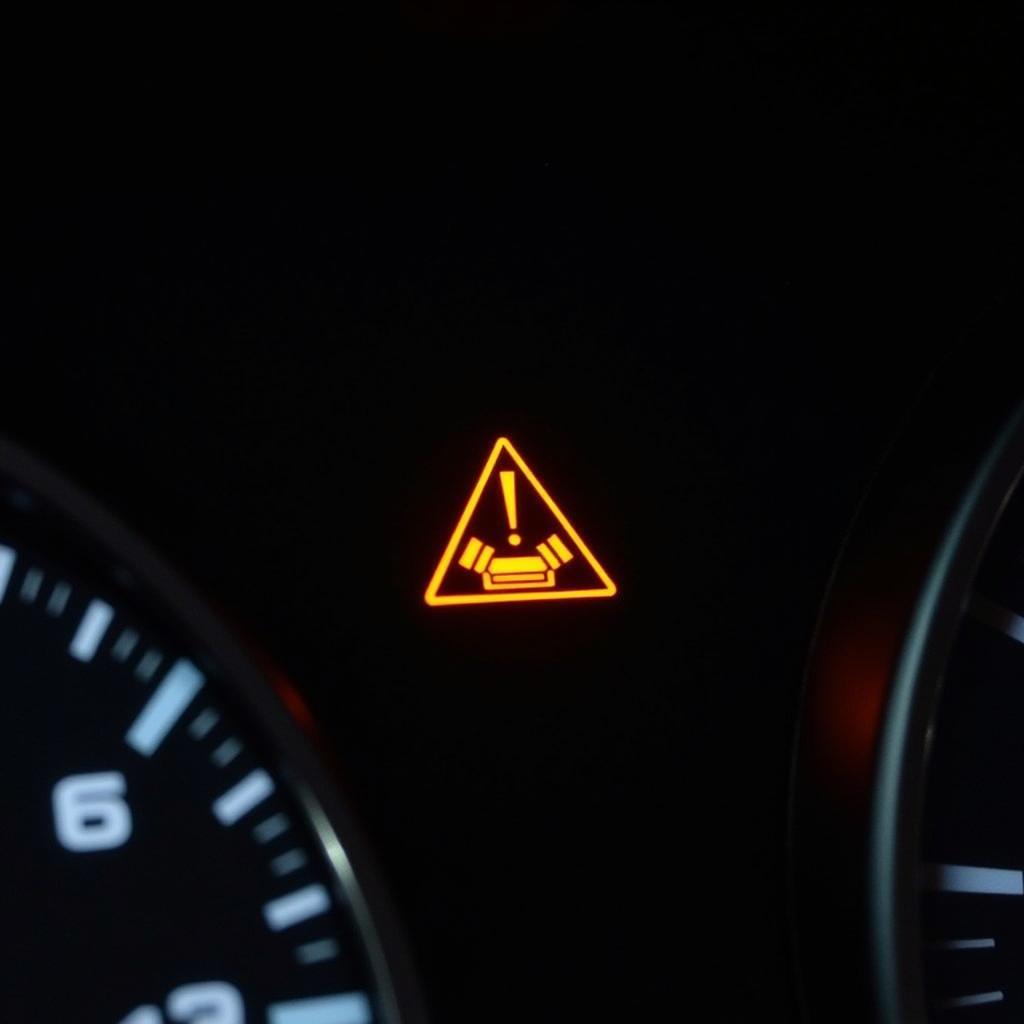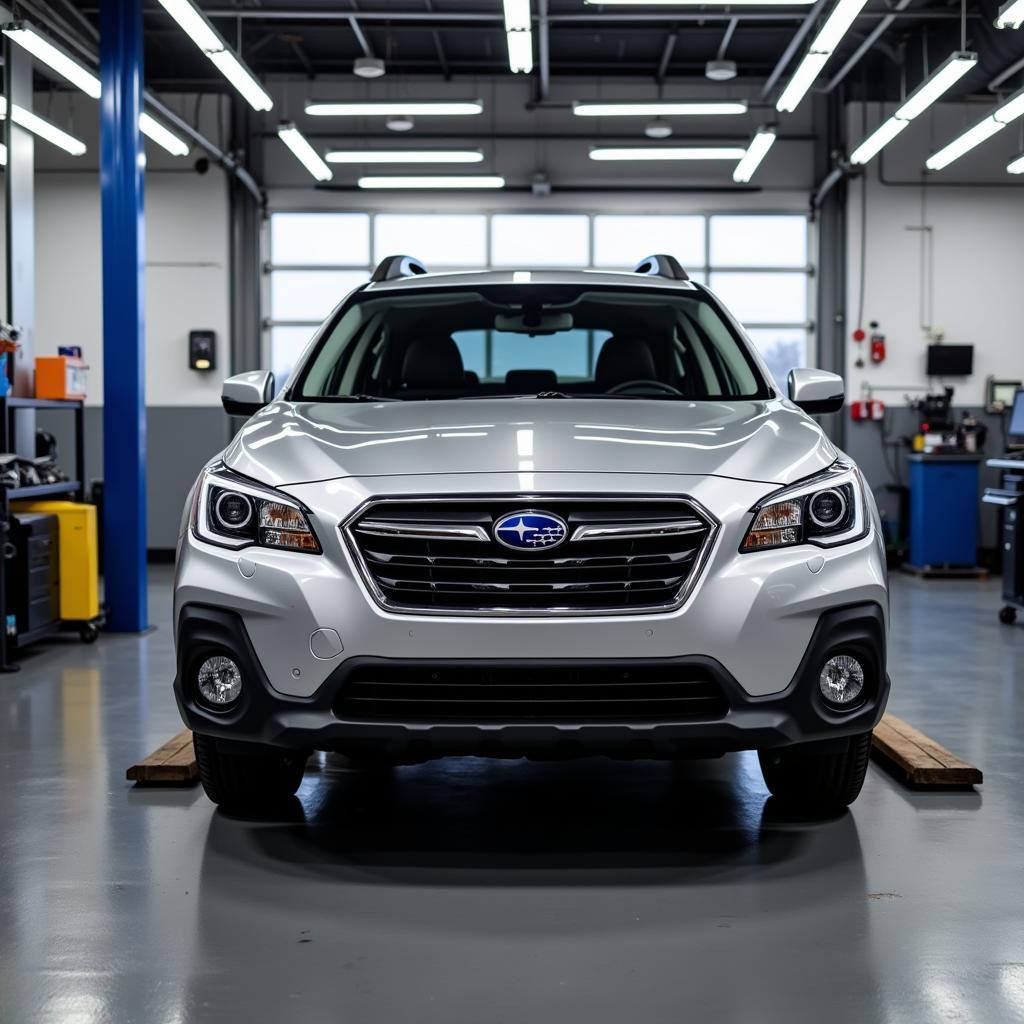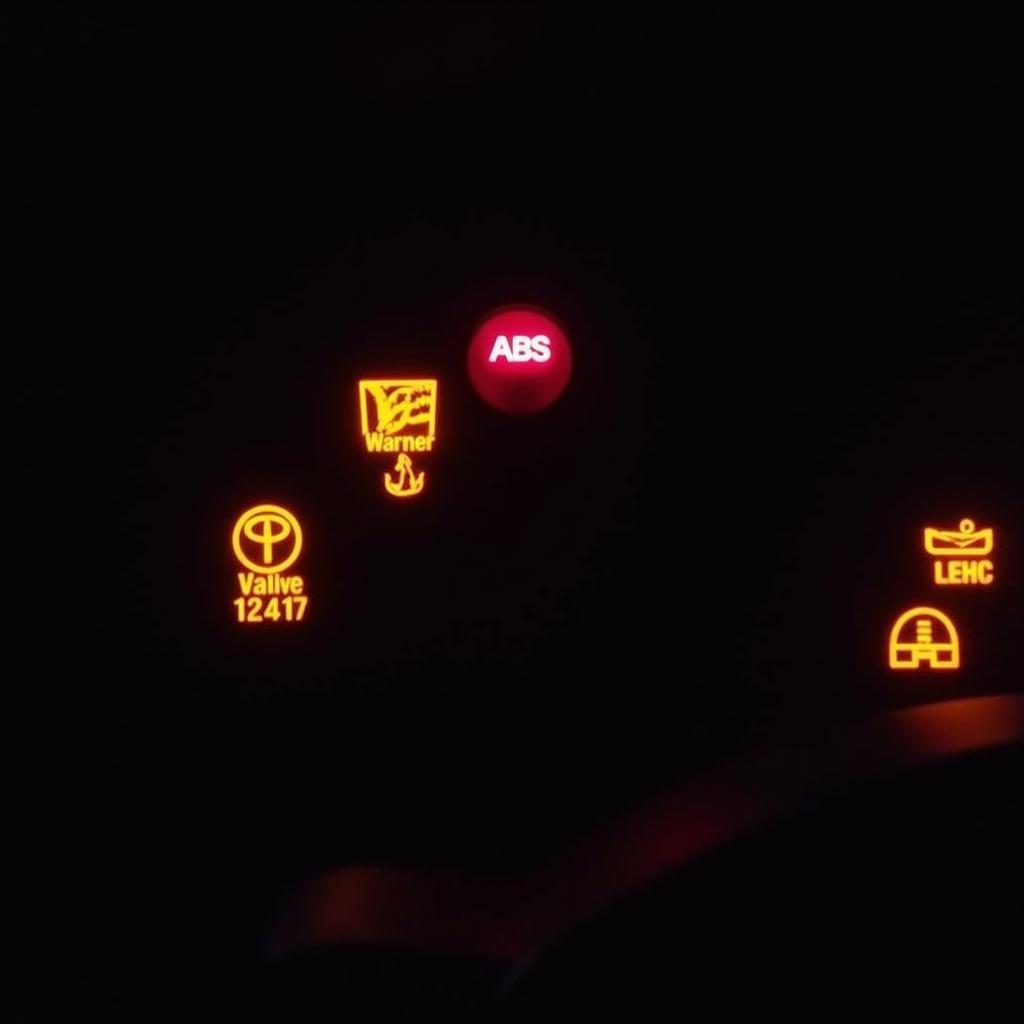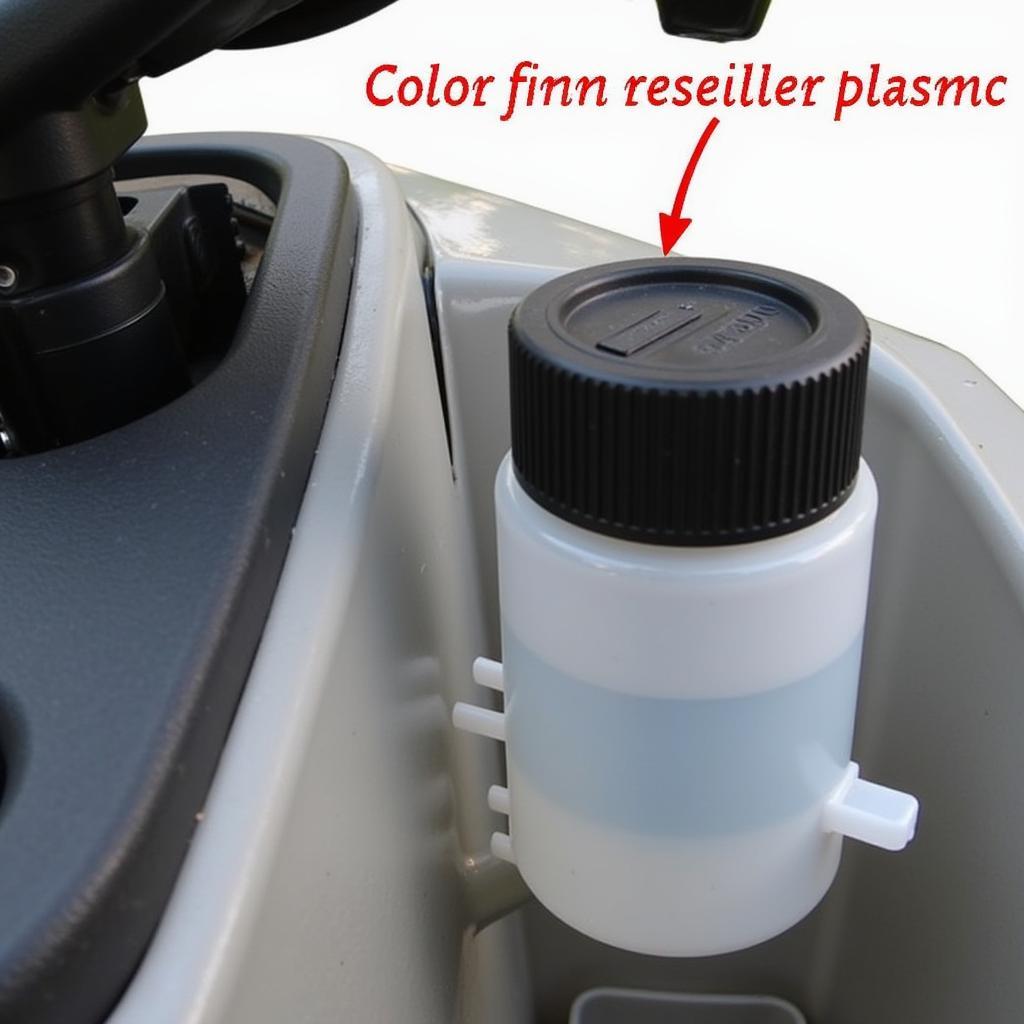A brake light warning on your Subaru Outback dashboard can be a jarring sight, signaling potential issues with your braking system. Ignoring this warning light can compromise your safety and lead to costly repairs. This guide helps you navigate the complexities of a Subaru Outback brake light warning, empowering you to address the issue effectively.
Common Causes of a Subaru Outback Brake Light Warning
Several factors can trigger the brake light warning in your Subaru Outback. Some of the most common reasons include:
- Worn Brake Pads: Brake pads naturally wear down over time. When they reach a certain thinness, your Subaru Outback triggers the brake light warning as a safety precaution.
- Brake Fluid Leak: Brake fluid is crucial for transmitting force to your brakes. A leak in the system can lead to a soft brake pedal and illuminate the warning light.
- Faulty Brake Light Switch: The brake light switch activates your brake lights when you press the pedal. If the switch malfunctions, the lights might stay on constantly, flicker, or not illuminate at all, triggering the warning light.
- ABS Sensor Issues: The Anti-lock Braking System (ABS) prevents wheel lockup during braking. A malfunctioning ABS sensor can disrupt this system and cause the warning light to appear.
- Parking Brake Engaged: Sometimes, a simple oversight like leaving the parking brake partially engaged can trigger the brake light warning.
Diagnosing the Problem: Steps to Take
 Subaru Outback Dashboard Warning Light
Subaru Outback Dashboard Warning Light
Identifying the root cause of the brake light warning in your Subaru Outback is essential for effective repair. Here’s a step-by-step approach:
- Check the Parking Brake: Ensure the parking brake is fully disengaged. Sometimes, a partially engaged parking brake can be the culprit.
- Inspect Brake Fluid Level: Locate the brake fluid reservoir under the hood and check the fluid level. Low brake fluid often indicates a leak.
- Examine Brake Pads: Visually inspect the brake pads through the wheel spokes. If you see less than 1/4 inch of friction material, it’s time for a replacement.
- Look for Leaks: Inspect the area around the brake lines, calipers, and master cylinder for any signs of fluid leakage.
When to Seek Professional Help
While some issues can be addressed with basic troubleshooting, seeking professional help is crucial for a thorough diagnosis and repair. Consider contacting a certified mechanic, especially if:
- You notice brake fluid leaks.
- Your brake pedal feels spongy or goes to the floor.
- You hear unusual grinding or squealing sounds while braking.
- You experience a pulling sensation when applying the brakes.
- The warning light persists despite checking the basics.
Remote Diagnostic and Programming Solutions: The Future of Car Repair
Advancements in automotive technology have paved the way for innovative solutions like remote diagnostics and programming. These services allow qualified technicians to access your Subaru Outback’s computer system remotely, diagnose issues, and even install software updates. subaru outback 2011 brake warning light
Benefits of Remote Diagnostics and Programming:
- Convenience: Skip the trip to the mechanic and have your vehicle diagnosed from the comfort of your home or office.
- Fast and Efficient: Remote diagnostics streamline the troubleshooting process, leading to faster repairs.
- Cost-Effective: Identify issues early on, potentially preventing minor problems from escalating into costly repairs.
Preventing Future Brake Light Warnings
 Subaru Outback Undergoing Routine Maintenance
Subaru Outback Undergoing Routine Maintenance
Proactive maintenance is key to preventing brake light warnings and ensuring the longevity of your Subaru Outback’s braking system. Here are some essential tips:
- Regular Brake Inspections: Schedule brake inspections every 12,000 miles or as recommended in your owner’s manual.
- Timely Brake Pad Replacement: Don’t wait for the brake light warning to illuminate. Replace brake pads proactively before they wear down excessively.
- Brake Fluid Flush: Flush your Subaru Outback’s brake fluid every 2 years or as recommended by your manufacturer to maintain optimal performance.
- Quality Brake Parts: Always opt for high-quality brake parts from reputable manufacturers for long-lasting performance and safety.
Conclusion
A brake light warning on your Subaru Outback is a serious matter that should never be ignored. Understanding the common causes and taking the necessary steps for diagnosis and repair are crucial for your safety and the well-being of your vehicle. By embracing preventive maintenance practices and considering advanced solutions like remote diagnostics, you can ensure optimal performance and longevity for your Subaru Outback’s braking system. Remember, a well-maintained braking system is paramount for a safe and enjoyable driving experience.
FAQs
1. Can I still drive my Subaru Outback with the brake light on?
It’s highly discouraged. A brake light warning indicates a potential problem with your braking system, compromising your safety. It’s best to have your vehicle inspected and repaired promptly.
2. How much does it cost to fix a brake light warning in a Subaru Outback?
The repair cost depends on the underlying issue. Simple fixes like brake pad replacements can range from $150 to $300 per axle, while more complex repairs like ABS sensor or master cylinder replacements can cost significantly more.
3. How often should I change my Subaru Outback’s brake fluid?
It’s generally recommended to flush your Subaru Outback’s brake fluid every 2 years or as specified in your owner’s manual.
4. Can I check the brake fluid level myself?
Yes, you can locate the brake fluid reservoir under the hood and check the fluid level. Refer to your owner’s manual for the exact location.
5. Are aftermarket brake parts as good as OEM parts?
While some aftermarket brake parts offer comparable quality, it’s generally recommended to choose OEM (Original Equipment Manufacturer) parts for optimal performance and compatibility.
6. How can remote diagnostics help with my Subaru Outback’s brake light warning?
Remote diagnostics can quickly identify the cause of the brake light warning, potentially saving you time and money on unnecessary repairs.


